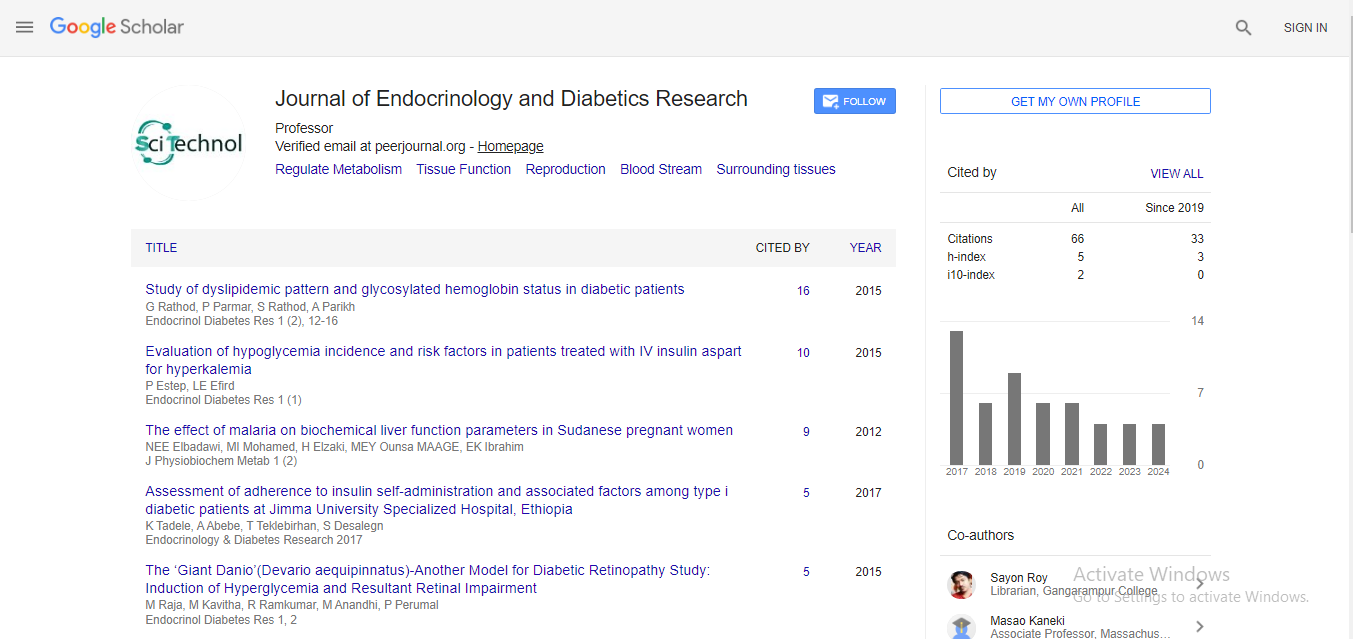Research Article, Endocrinol Diabetes Res Vol: 1 Issue: 2
The 'Giant Danio' (Devario aequipinnatus) - Another Model for Diabetic Retinopathy Study: Induction of Hyperglycemia and Resultant Retinal Impairments
| Raja M, Kavitha M, Ramkumar R, Anandhi M and Perumal P* | |
| Department of Biotechnology, Periyar University, India | |
| Corresponding author : Pachiappan Perumal Department of Biotechnology, Periyar University, Periyar Palkalai Nagar, Salem-636011, India Tel: +91 4272345766 Extn: 225 Fax: +91 4272345124 E-mail: perumalarticles@gmail.com |
|
| Received: May 04, 2015 Accepted: October 14, 2015 Published: October 18, 2015 | |
| Citation: Raja M, Kavitha M, Ramkumar R, Anandhi M, Perumal P (2015) The ‘Giant Danio’ (Devario aequipinnatus) - Another Model for Diabetic Retinopathy Study: Induction of Hyperglycemia and Resultant Retinal Impairment. Endocrinol Diabetes Res 1:2. doi:10.4172/2470-7570.1000108 | |
Abstract
Background: To develop the Giant Danio, Devario aequipinnatus as a model animal to examine the type 1 diabetes associated vision impairment that occurs in human.
Methods: The induction of hyperglycemia in Giant Danio by alternately immersing the fish in glucose solution and water. Eyes from untreated fish as well as fish exposed to alternating 1% and 2% glucose/water solutions for 15 and 13 days were dissected, sectioned, stained and then visualized for their retinal morphology and the thickness of retinal layers were computed.
Results: In untreated fish retinas, the inner plexiform layer (IPL) and inner nuclear layer (INL) were approximately in similar thickness. In case of fish repeatedly exposed to 1% glucose solution, the IPL and INL thickness was found to be significantly reduced by 35%; (P<0.05), but in the case of fish exposed to 2% glucose solution, the IPL and INL thickness significantly reduced by 48%; (P<0.05).
Conclusions: IPL and INL of glucose treated fishes were significantly reduced as reported earlier by researchers, and our results suggest that Giant Danio could form an animal model to study the retinal impairment.
 Spanish
Spanish  Chinese
Chinese  Russian
Russian  German
German  French
French  Japanese
Japanese  Portuguese
Portuguese  Hindi
Hindi 


